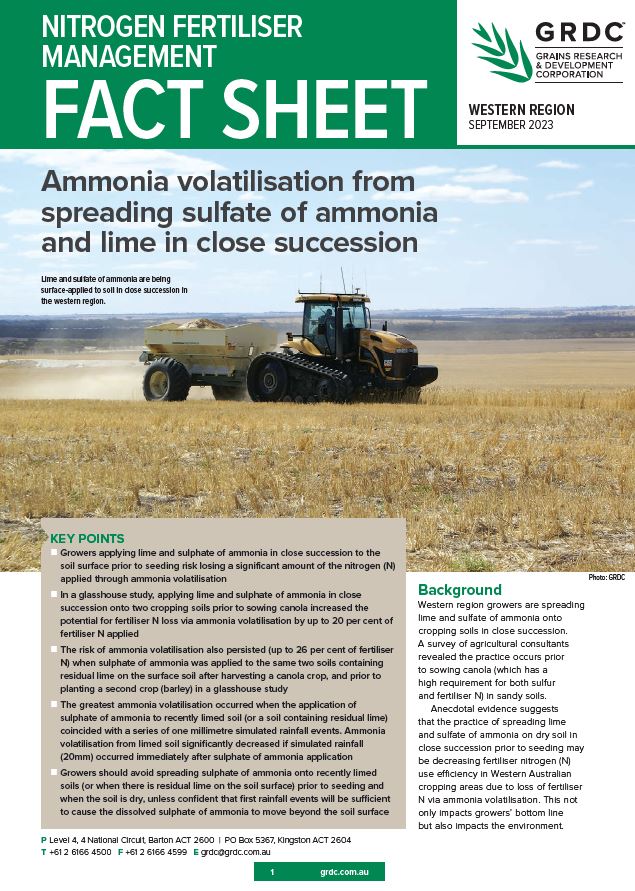Nitrogen fertiliser management
Nitrogen fertiliser management
Published: 20 Sep 2023
Ammonia volatilisation from spreading sulfate of ammonia and lime in close succession
Key Points
- Growers applying lime and sulphate of ammonia in close succession to the soil surface prior to seeding risk losing a significant amount of the nitrogen (N) applied through ammonia volatilisation
- In a glasshouse study, applying lime and sulphate of ammonia in close succession onto two cropping soils prior to sowing canola increased the potential for fertiliser N loss via ammonia volatilisation by up to 20 per cent of fertiliser N applied
- The risk of ammonia volatilisation also persisted (up to 26 per cent of fertiliser N) when sulphate of ammonia was applied to the same two soils containing residual lime on the surface soil after harvesting a canola crop, and prior to planting a second crop (barley) in a glasshouse study
- The greatest ammonia volatilisation occurred when the application of sulphate of ammonia to recently limed soil (or a soil containing residual lime) coincided with a series of one millimetre simulated rainfall events. Ammonia volatilisation from limed soil significantly decreased if simulated rainfall (20mm) occurred immediately after sulphate of ammonia application
- Growers should avoid spreading sulphate of ammonia onto recently limed soils (or when there is residual lime on the soil surface) prior to seeding and when the soil is dry, unless confident that first rainfall events will be sufficient to cause the dissolved sulphate of ammonia to move beyond the soil surface.
Want a hard copy?
GRDC produces a range of publications to share the RD&E knowledge generated from our investments with grain growers and the broader industry.
Printed publications
Printed copies of some publications are available for growers, advisers and farming systems groups, for personal use and distribution at GRDC events.
Contact GroundCover Direct on 1800 11 00 44 or email ground-cover-direct@canprint.com.au to request copies. Publications are free but postage and handling costs may apply.
Download PDF
Region: West
GRDC Project Code: UWA2202-001RTX,

